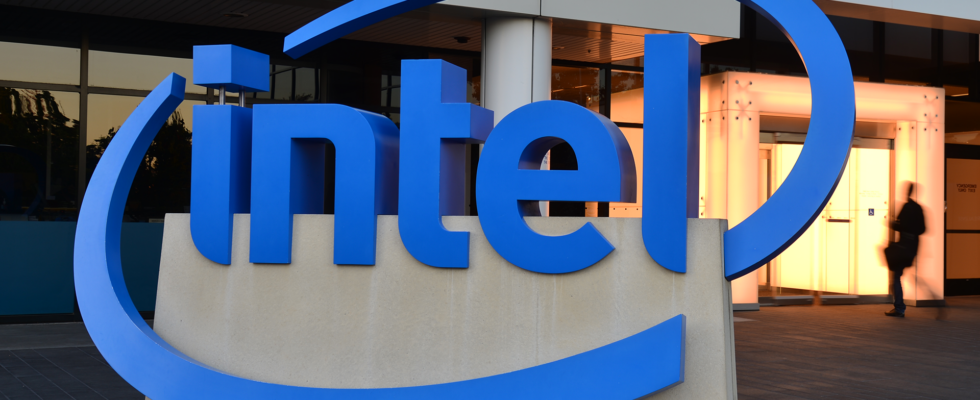Intel prévoit de réduire son effectif de plusieurs centaines d’employés dans ses centres de recherche et développement en Israël, à la suite de licenciements similaires ailleurs. Cette décision fait partie de mesures de réduction des coûts face à des défis financiers. Alors qu’Intel concentre les coupes dans ses équipes de R&D, d’anciens employés rejoignent Nvidia et d’autres grandes entreprises technologiques, attirés par des offres salariales plus compétitives.
Intel is set to downsize its workforce by several hundred employees at its research and development centers in Israel, following similar reductions at its other global facilities, according to reports from DigiTimes. This strategy aligns with the company’s broader cost-containment efforts as it faces financial difficulties, potentially creating openings for rival firms to tap into Intel’s talent pool. Notably, many Intel staff have already transitioned to Nvidia earlier this year, as reported by Globes.
In Israel, Intel employs approximately 11,700 individuals, with around 7,800 in R&D and 3,900 in manufacturing roles. The upcoming layoffs are anticipated to primarily affect R&D positions, while manufacturing personnel are expected to remain largely untouched as Intel prepares for the launch of Fab 38 in Kiryat Gat. The specific number of employees who may be offered voluntary exits, retirement options, or outright layoffs remains unclear, though Globes cites that hundreds of positions will be eliminated.
Intel operates three R&D facilities in Israel, each with a distinct specialization: Haifa focuses on CPUs, AI hardware, and software; Petah Tikva is dedicated to communications and AI innovations; and Jerusalem works on communications, software, and cybersecurity solutions. While the report does not pinpoint which R&D sites will face additional reductions, it confirms that layoffs are imminent in these centers.
The Israeli R&D division at Intel has played a crucial role in developing several ground-breaking microarchitectures, including Banias, Yonah/Merom, and Nehalem. These architectures have held strategic importance for Intel over the years. For instance, the Banias processor was central to Intel’s Centrino platform, the first-ever laptop-centric offering that transformed the marketplace. The Yonah/Merom series revitalized Intel’s position in the high-performance PC sector, replacing the energy-intensive Netburst microarchitecture used in Pentium 4 chips.
Despite the workforce cuts, it’s worth noting that employees are seeking new opportunities elsewhere. Nvidia has actively recruited former Intel staff, with at least 30 individuals transferring to its offices in Yokneam and Tel Aviv in 2024 alone. Overall, the number of Intel employees hired by Nvidia might fall between 60 to 90, with projections suggesting it could reach around 100 as more layoffs occur. Nvidia’s presence in Israel has expanded significantly, reporting a workforce of 4,000 by June 30.
Former Intel workers moving to Nvidia have found more appealing salary packages. For example, a junior hardware engineer at Nvidia can earn an initial annual salary of NIS 566,000 (approximately $151,500), which is about 33% greater than a similar position at Intel. Nvidia also provides more lucrative stock options compared to Intel, beginning at NIS 56,200 annually ($15,045).
In addition to Nvidia, several prominent tech firms are hiring ex-Intel employees. Companies like Apple, Amazon, and Intel’s own subsidiary, Mobileye, have recently recruited from Intel’s Israeli workforce, with additional talent moving to Microsoft, Google, and Huawei, which has a development center in Haifa.
Intel prévoit de réduire son personnel de plusieurs centaines d’employés dans ses centres de recherche et développement israéliens, suite à des coupes similaires dans ses installations ailleurs dans le monde, selon des rapports de DigiTimes. Cette stratégie s’inscrit dans le cadre des efforts globaux de réduction des coûts de l’entreprise, alors qu’elle fait face à des difficultés financières, créant potentiellement des ouvertures pour que des entreprises rivales attirent le personnel d’Intel. Notamment, de nombreux employés d’Intel ont déjà rejoint Nvidia plus tôt cette année, comme l’indique Globes.
En Israël, Intel emploie environ 11 700 personnes, avec environ 7 800 dans la R&D et 3 900 dans des rôles de fabrication. Les licenciements à venir devraient principalement toucher les postes R&D, tandis que le personnel de fabrication devrait rester en grande partie intact alors qu’Intel se prépare au lancement de la Fab 38 à Kiryat Gat. Le nombre exact d’employés qui pourraient être proposés pour un départ volontaire, prendre leur retraite ou être licenciés n’est pas clair, bien que Globes cite que des centaines de postes seront supprimés.
Intel dispose de trois sites de R&D en Israël, chacun ayant une spécialisation distincte : Haïfa se concentre sur les CPU, le matériel et les logiciels d’IA ; Petah Tikva est dédié aux solutions de communication et d’IA ; et Jérusalem travaille sur les communications, les logiciels et la cybersécurité. Bien que le rapport ne précise pas quels sites de R&D seront davantage réduits, il confirme que des licenciements sont imminents dans ces centres.
